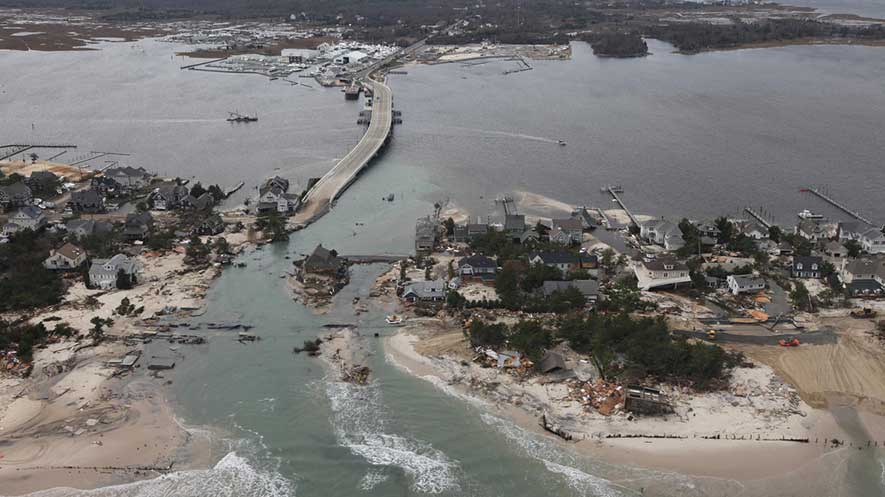Almost four years after the devastation brought on by the landfall of Superstorm Sandy, coastal scientists and policy-makers are still working to fashion a response shaped by the lessons learned from the storm.
Some of the battle is scope, particularly given Sandy’s unique size and attributes. Another factor is sound science, since gathering, analyzing and reporting findings in an accurate and accessible manner is hardly a task accomplished overnight.
However, studies are now coming together and bring disseminated to coastal professionals and the public, and the most recent issue of “Shore & Beach” (a peer-reviewed coastal technical journal) offers an extensive look at some of the coastal work that has been completed and the steps that have been taken to increase coastal resiliency and prepare for the next storm.
“In the coming decade there will be many debates on the most cost-effective way to create resilient coastal communities in the face of climate change, sea level rise, and a possible increase in the frequency of storms like Sandy,” according to the issue’s guest editor Tom Herrington, assistant director for the Center for Maritime Systems at Stevens Institute of Technology in Hoboken, NJ.
“How we achieve resiliency as a society depends greatly on what we are learning from Sandy.”
Among the issue’s articles:
- Katlin Walling, Tom Herrington and Jon Miller analyze the variation in Sandy-generated damage between residential structures protected by a buried rock seawall and those by a narrow beach and low dune in two adjacent beachfront communities (Bay Head and Mantoloking. NJ). Their findings:
- Areas with the rock seawall experienced less erosion behind it but more erosion seaward of it when compared to sections of shoreline without the rock seawall.
- For structures with the rock seawall protection, wave impact and scour resulted in minor damage, whereas for structures without the rock seawall protection wave impact and scour resulted in severe damage.
- The variation in distance to the mean high water line had more influence in damage levels of wave impact and scour than the variance in beach protection type.
- Kimberly McKenna, Stewart Farrell, and Jeffrey Gebert utilized a long-term beach profiling network in New Jersey to measure beach, dune and nearshore recovery following the passage of Sandy via shoreline position and volume changes recorded from fall 2012 to fall 2015. They found that the volumes generated through natural recovery did not approach the volumes that were placed via post-storm beach fill efforts, but the sand brought into the littoral system via such efforts benefitted natural beach-dune recovery.
-
Lauren Klonsky, Frances Bui, Donald Cresitello, David Robbins, and J.B. Smith provide a case study on the application of the North Atlantic Coast Comprehensive Study (NACCS) Coastal Storm Risk Management Framework, analyzing the risk and vulnerabilities for an area of coastal New Jersey that was severely impacted by Sandy. The article provides the steps on how to incorporate necessary data to evaluate exposure and risk of coastal flooding and how to identify areas of relatively high exposure and risk using local and national datasets.
This work was completed in response to Sandy by the U.S. Army Corps of Engineers, NACCS is viewed by many as the framework by which the Corps eventually will assist in coastal management and developing coastal resiliency nationwide.
- Bianca Reo Charbonneau and John P. Wnek report on a field investigation of the natural recovery of eroded dunes after Sandy on Island Beach State Park, NJ. The work compares the recovery of dunes through the use of dune fencing verses the natural recovery of vegetated dunes without fencing. During initial recovery, fencing configuration seems to be an important factor in determining dune growth. The work also determined that assessing particle size can give insight into the means of sand transport. These results have implications for coastal management and restoration aimed at accruing the most sand in least time for immediate post-storm recovery efforts.
“Shore & Beach” is a peer-reviewed technical journal published quarterly since 1933 by the American Shore & Beach Preservation Association. You can find out more about the journal and the association online here.



